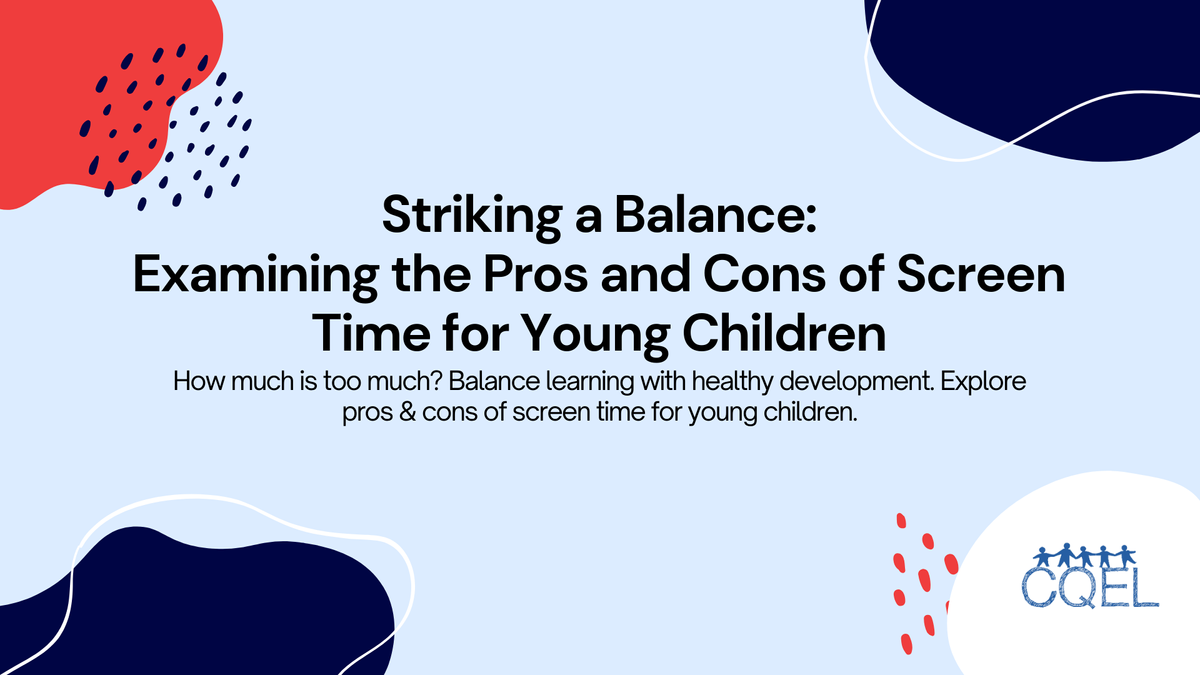Striking a Balance: Examining the Pros and Cons of Screen Time for Young Children
How much is too much? Balance learning with healthy development. Explore pros & cons of screen time for young children.

In today's digital age, screens are ubiquitous. Aspiring childcare providers in California are faced with a crucial question: how much screen time is appropriate for young children entrusted to their care? Understanding the potential benefits and drawbacks of screen time is essential for making informed decisions and creating a balanced learning environment. Let's delve into the pros and cons of screen time for young children.
Potential Benefits of Screen Time
Screens can offer some educational advantages for young children. High-quality, age-appropriate educational apps and programs can introduce new concepts, encourage interactive learning, and foster basic literacy and numeracy skills. Educational games can challenge problem-solving abilities and stimulate cognitive development. Furthermore, video chat platforms can allow children to connect with distant family members or classmates, fostering social interaction and communication skills.
Potential Drawbacks of Excessive Screen Time
Despite the potential benefits, excessive screen time can have negative consequences for young children. One major concern is the displacement of essential play activities. Unstructured play is crucial for fostering creativity, imagination, and social skills. Time spent glued to a screen is time not spent exploring the world, building with blocks, or engaging in imaginative play with peers. Furthermore, excessive screen time can contribute to attention and focus issues, making it difficult for children to concentrate on tasks that require sustained attention. The American Academy of Pediatrics (AAP) recommends limiting screen time for children under 18 months and avoiding screen time altogether for children under 12 months (www.aap.org).
Promoting a Balanced Approach to Screen Time
The key to navigating the world of screen time lies in moderation. The AAP recommends prioritizing high-quality interactive activities for young children. When incorporating screens, focus on educational content aligned with your program's curriculum and the child's developmental stage. Always supervise screen time and encourage active engagement with the content. Most importantly, create a stimulating environment that prioritizes hands-on exploration, creative play, and social interaction.
By understanding the pros and cons of screen time, aspiring childcare providers in California can make informed decisions about its role in their program. Remember, fostering a balanced approach that prioritizes interactive play and developmentally appropriate activities is crucial for nurturing young minds in the digital age.
